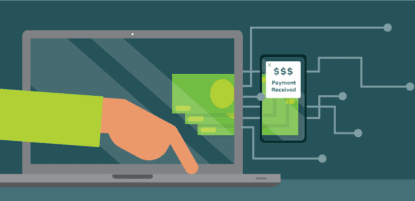If you’re a CFO and you’re unfamiliar with virtual cards, keep reading.
Digital disruption is changing the role of CFO in organizations in a big way. According to Digitalist Magazine, “CFOs are finding their defined roles and responsibilities blurred,” as they are “now expected to own not only the financial sphere but to help build an intelligent enterprise with technical fluency.”
For forward-thinking CFOs, the introduction of virtual card technology to the accounts payable process can serve as a catalyst in the finance function’s quest for greater technical fluency in the long-term.
Virtual cards are an attractive alternative to paper checks, where B2B payments are executed by way of a randomly generated virtual card number that can only be accepted by the designated recipient one time for the given amount. This payment process, known as tokenization, and it’s unique characteristics, afford finance teams ample opportunity to accomplish more with existing resources.
Among the core reasons that virtual cards should be on every CFO’s radar are:
Virtual cards increase your team’s efficiency by simplifying payments
Writing paper checks was long the status quo for B2B payments, and got the job done for parties on each side of the transaction. However, it came at a cost upwards of $5 for the entity writing the check – a number that quickly adds up if you’re a team making hundreds of payments every month.
Virtual cards move your payments online, and eliminate paper, stamps, and hours of time spent signing checks and sealing envelopes from the equation. Additionally, virtual cards offer this increased level of convenience, similar to that of a credit card payment, but maintain the visibility of an ACH transfer. Virtual card payments are debited from your bank account as soon as they are redeemed by your vendor, allowing your team to keep the most up-to-date and accurate picture of cash flow at all times.
Virtual cards optimize your cash flow through greater flexibility and cash-back rebates
Another downside of paper checks is their inflexible and time-consuming nature. If you want to pay a vendor by check, you can be confident that it will take a minimum of one week until that payment is received and processed. This requires extra diligence on the part of your AP staff to ensure your business is getting every payment out the door far enough in advance to ensure your vendors will be paid on time. The alternative in this situation is to disregard payment deadlines, and risk alienating vendors – a key stakeholder in your business.
The instantaneous nature of virtual card payments creates flexibility for your team, enabling them to hang on to payments until the deadlines get closer, and still ensure every vendor is paid on time. But if a vendor is willing to offer you an early-pay discount to make back some of your AP spend, virtual card payments open up the opportunity to easily capitalize.
Virtual cards also open up another avenue for boosting your short term cash flow optimization in the form of cash-back rebates. Virtual card issuers are willing to offer generous rebates for all transactions processed through virtual card platforms, providing even more incentive to benefit from making payments that will need to be paid regardless.
Virtual cards mitigate fraud risk through improved payment controls
According to the AFP annual Payments Fraud and Control Survey Report, paper checks are among a fraudster’s target of choice. The reason for this is simple: checks are incredibly easy to forge. Virtual cards mitigate this risk through the aforementioned tokenization process that virtual cards employ.
Payments made via virtual card can only be charged one time for one specific amount and all static credit card information is concealed throughout the entire process. This also removes the possibility of your business falling victim to a data breach of one of your vendors that would be holding credit card information on file.
The Best Path to Virtual Cards
Transitioning to virtual cards is easiest for companies that have adopted accounts payable automation technology into their AP workflow. MineralTree has a virtual card platform, SilverPay, built into its solution, and is also integrated with virtual card platforms provided by American Express and Mastercard. In MineralTree, customers can elect to pay a vendor through any of these platforms with just one click.
According to most middle-market businesses, one of the greatest barriers to adding cards to their B2B payment repertoire is a lack of visibility into which vendors can accept card payments. With MineralTree, this is a non-issue. MineralTree reaches out on your behalf, and provides a list of vendors that you are able to pay with virtual cards.
Pairing accounts payable automation with virtual card payments is a simple way to streamline your existing accounts payable process, and create the benefits increased efficiency, improved command over cash flow, and mitigated risk of fraud.
To learn more about how you can get started with virtual card payments with MineralTree, contact us for a personalized demo!



